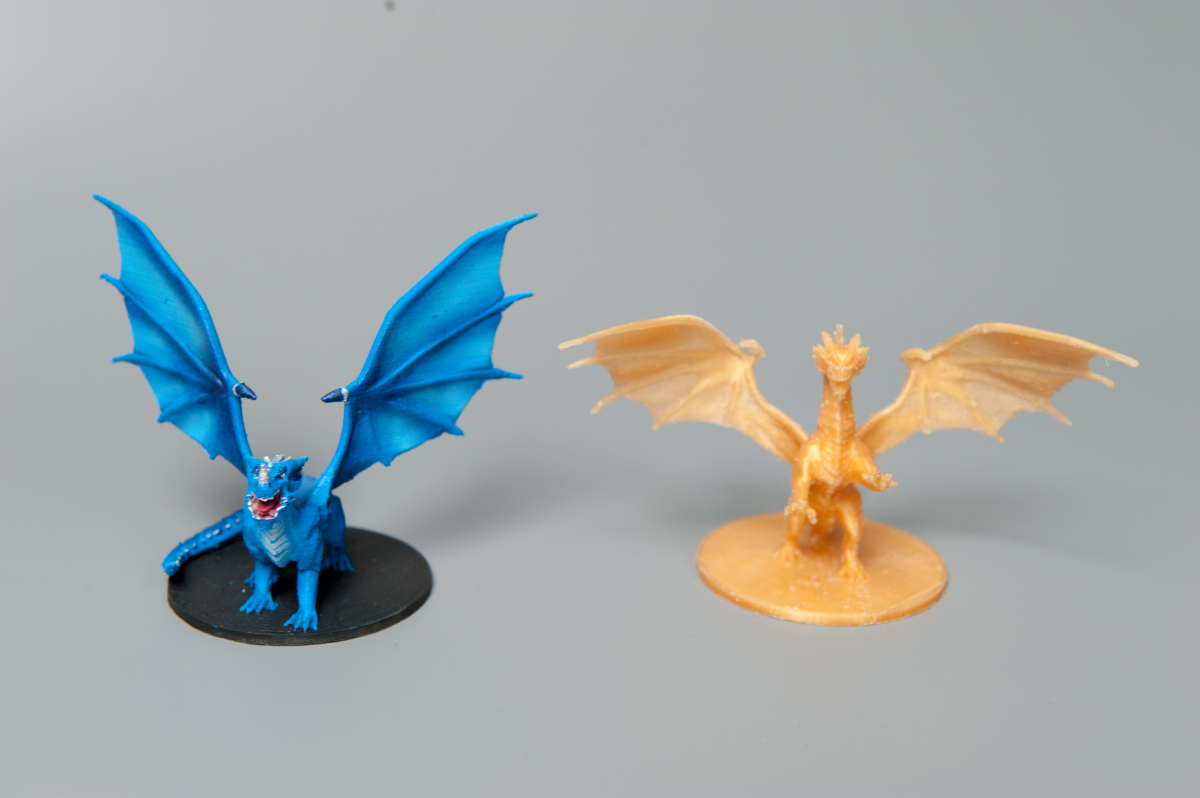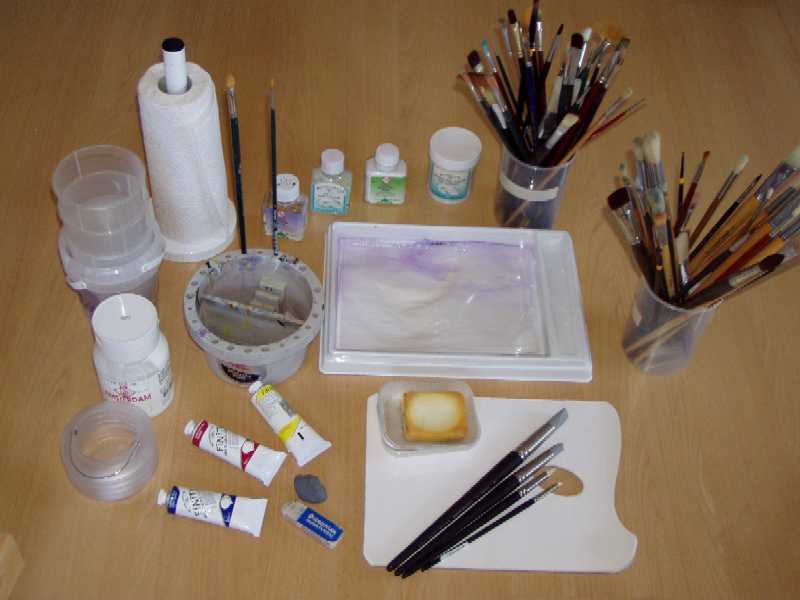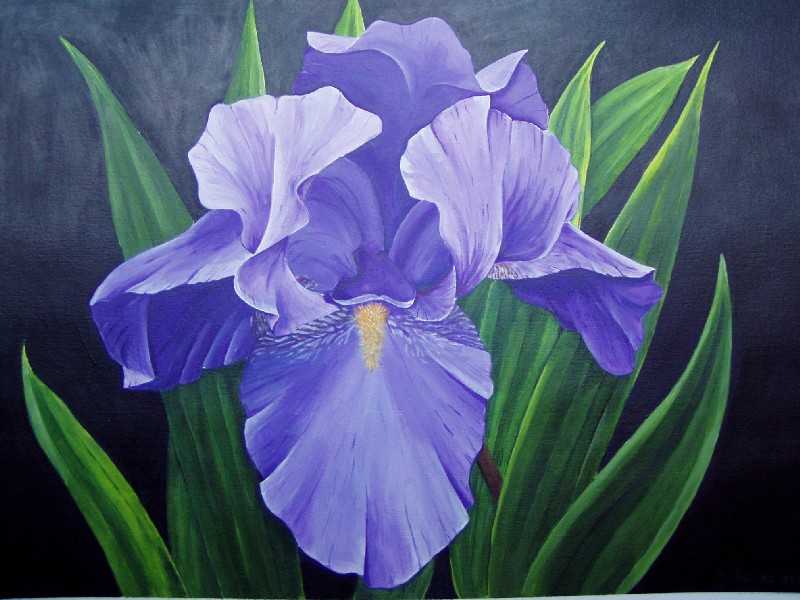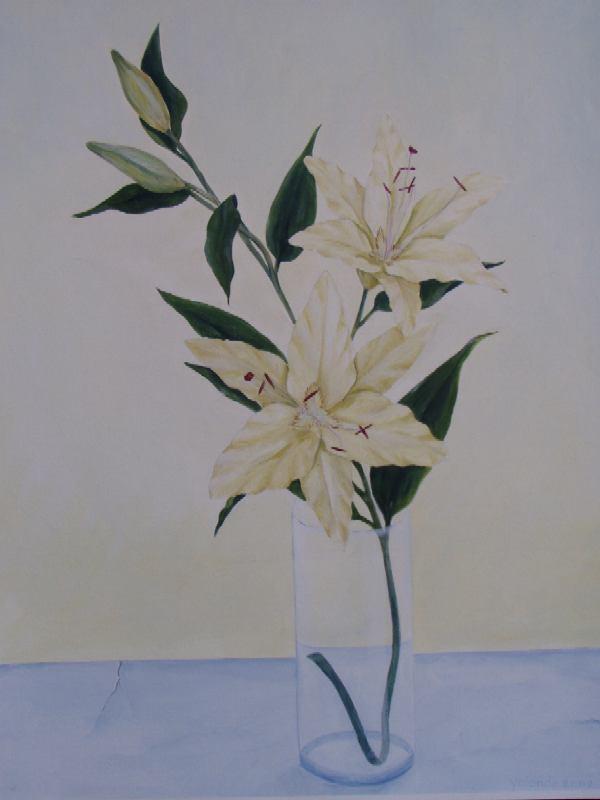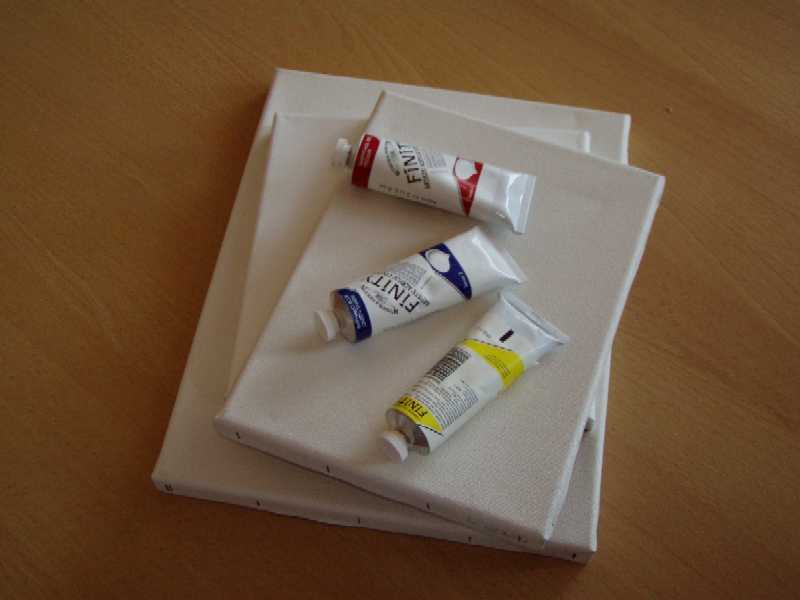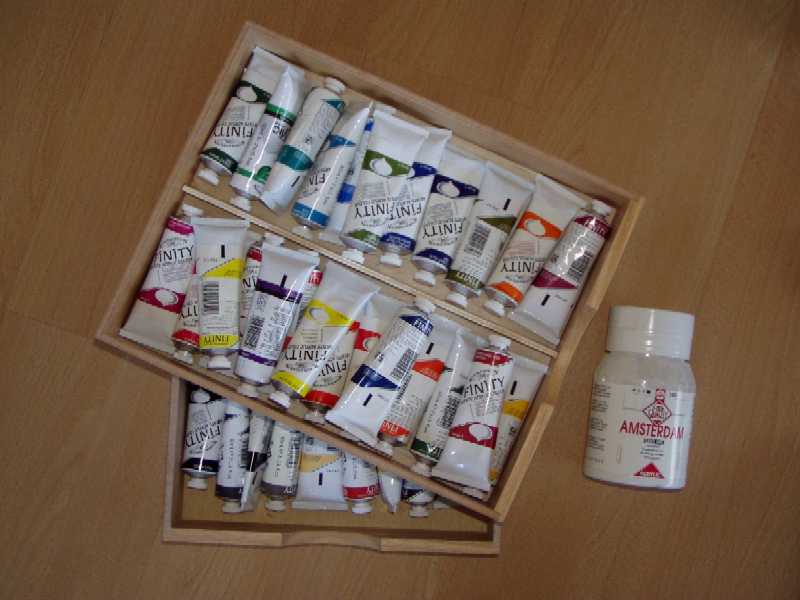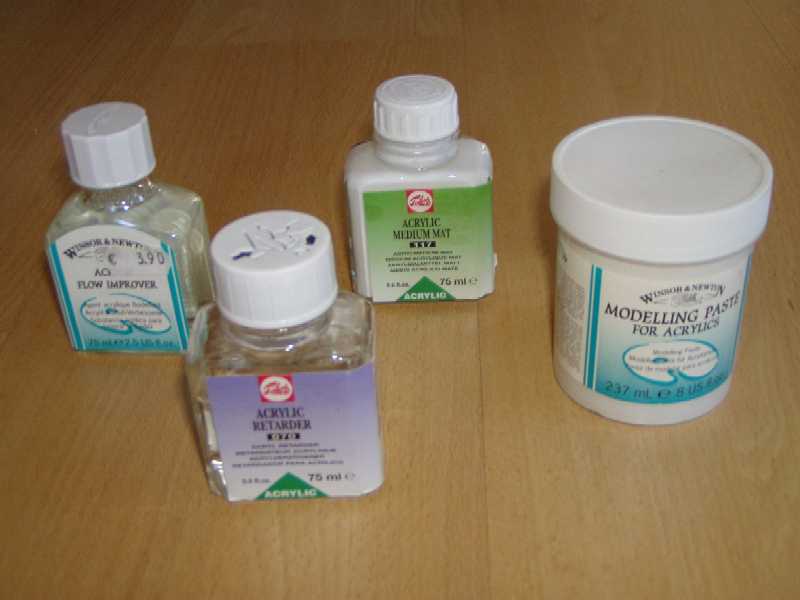A disadvantage of this quick drying time is that brushes must be cleaned immediately after use. If not, the plastic in the bristles will dry and adhere so strongly that it cannot be removed later. The appearance of acrylic paint is quite different from oil paint. The colors are somewhat harsher, and the gloss is different, although with the right additives, the effect of oil paint can be approximated.
|
Combining oil and acrylic paints is very feasible. For example, you could create a background with acrylic paint and then paint an image over it with oil paint. This can produce beautiful effects, and you won’t have to wait as long before continuing. However, ensure the acrylic paint is completely dry before applying oil paint. It has recently been found that restoring oil paintings painted on an acrylic base can be problematic.
Using acrylic paint over oil paint, however, poses issues. An acrylic layer over an oil paint layer adheres less well and can (partially) detach. |
Important properties of acrylic paint:
- Drying Process: Acrylic paint dries through the evaporation of the water it contains. What remains is a plastic layer that no longer dissolves in water. This means that brushes should not be left to dry out. Once the plastic has hardened, it cannot be properly removed from the brush, making it hard and unusable.
- Opacity: Once applied, the paint is opaque (relatively non-transparent, partly achieved by adding fillers). Because the paint is opaque, you can also apply light over dark.
- Layering: Multiple layers can be applied over each other.
|
- Color Change: The paint usually dries slightly darker. Once dry, it is resistant to light.
- Durability: The dried paint layer is plastic. This plastic layer is elastic and resistant to light, dryness, moisture, and temperature, ensuring good quality and longevity. This resistance to external influences does not always apply to the substrate, so some caution in storage and handling is still necessary.
- Versatility: You can mix this paint with various materials to experiment and express your creativity.
|
The same materials used for oil paint can be used for acrylic paint, but it's advisable not to use the same brush for both. Oil residues left on brushes used with oil paint can cause acrylic paint to adhere less well to the brush. Remember to clean brushes thoroughly and promptly with water and soap.
Acrylic paint can be used on canvas, panels, paper, ceramics, and various other materials. Like most drawing and painting materials, acrylic paint is available in different brands and qualities. It is sold in tubes and pots. Some well-known brands and qualities of acrylic paint include:
- Galeria (Winsor & Newton)
- Finity (Winsor & Newton)
- Amsterdam (Talens)
- Rembrandt (Talens)
|
Various mediums can be added to acrylic paint, each serving different purposes:
- Retarder: Slows down the drying time of the paint.
- Texture: Various mediums can be added to change the texture of the paint.
- Gloss: Alters the appearance of the work by making it more or less glossy.
- Acrylic Medium: Used for gloss or to thin the paint, create a haze over the work, or to allow colors to blend smoothly.
- Flow Improvers: Enhance the flow of the paint.
- Gesso
Gesso is a creamy, white, opaque mass, mainly consisting of titanium white and chalk. It is typically used to prepare substrates. The canvas or panel is painted with it before use, providing a good adhesive base. Gesso can also be mixed with color to create a colored background.
|



